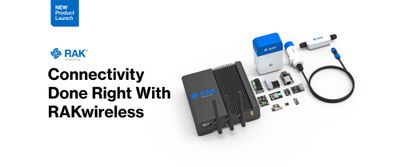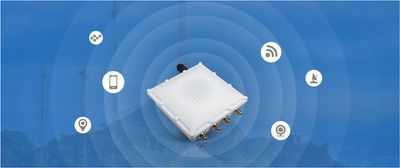The Story Behind the RAKwireless Modular Vision for IoT
When we started RAKwireless, we had three core beliefs:
- Everything is connected, which is why we work on IoT.
- Transparency is why we established a community-driven model.
- Diversity, which is why we focus on exploring a modular approach to make IoT easy for software developers.
The development of IoT is driven by individual applications, similar to how mobile applications played a significant role in popularizing mobile internet by making it more accessible and practical for users. Developers with application and software skills are crucial in creating useful IoT applications. However, hardware can be complex and challenging for them. Our vision for a modular system began with the idea of creating tools that allow application and software developers to interact with hardware, thereby accelerating IoT innovation easily.
IoT Applications VS. Mobile Applications
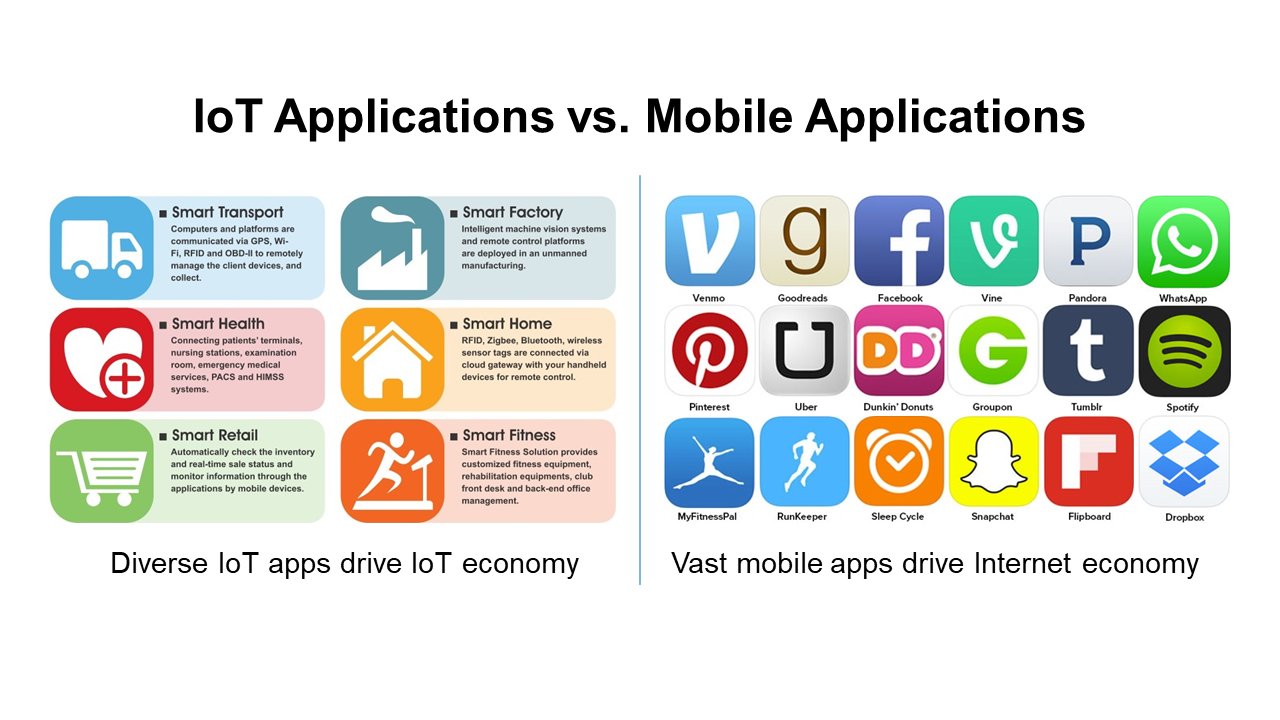
IoT edge device hardware differs from mobile device hardware.
While mobile devices can have standardized hardware produced in large volumes, IoT hardware lacks uniformity. Each application has unique requirements, making it challenging to create consistent hardware solutions for IoT scenarios. For example, monitoring industrial equipment may require different communication interfaces or connectivity options. This variation and concentrated volume make it challenging to get support from design companies or to start new projects.
IoT Edge Devices VS. Mobile Devices
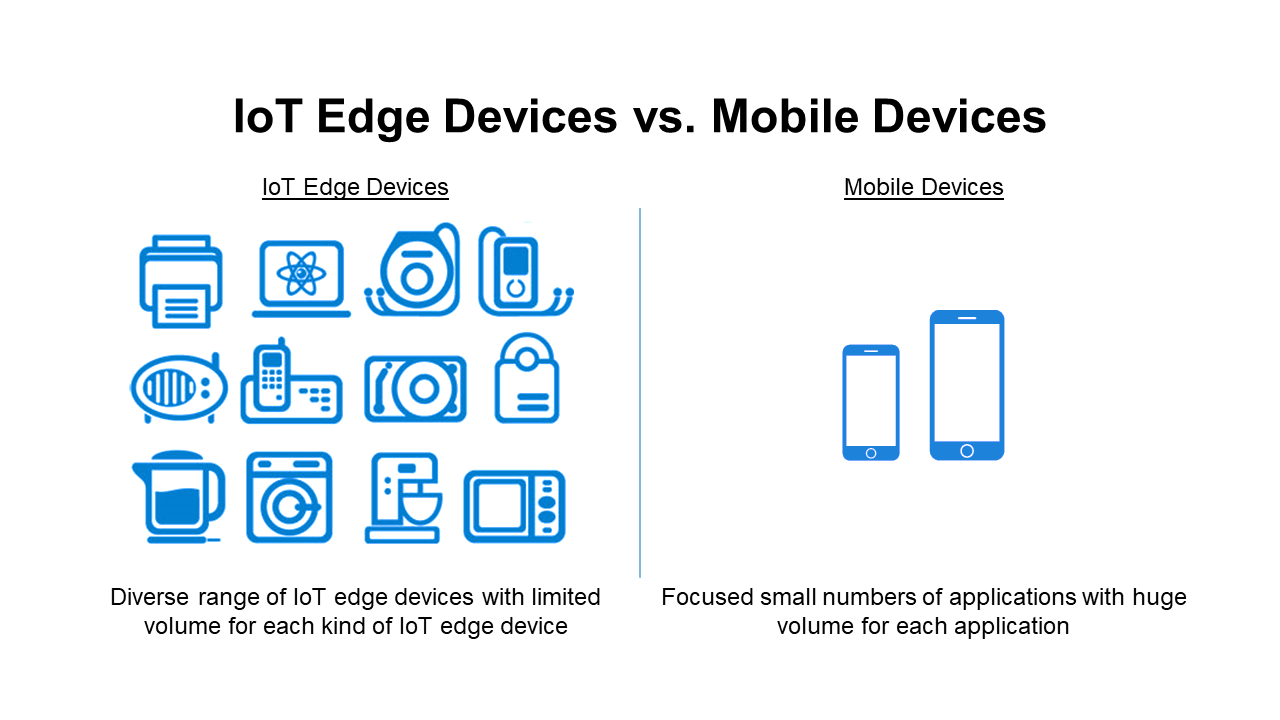
The problem is clear: while the mobile industry benefits from consistency, the IoT industry is diverse. There are millions of sensors, various connectivity standards, and computing communication interfaces.
How can we use universal definitions to connect all fundamental blocks?
After analyzing the situation, we found that most sensors use I2C, SPI, and UART, with I2C being the most common. Therefore, we reserved I2C in all socket definitions and provided backup sockets for the rest.
Additionally, we needed to consider connections to other mainstream industrial interfaces, both now and in the future. Thus, we defined another socket for WisBlock IO, which can connect to RS485, Analog, Digital, and 4-20 mA interfaces.
Building on these considerations, we developed a range of sensors designed to address the varied demands of different sectors. Our sensor collection includes water level sensors, soil moisture sensors, and environmental sensors like temperature and humidity detectors. These sensors are tailored to meet specific needs in agriculture, industrial monitoring, or environmental tracking.
Three Fundamental IoT Edge Device Components
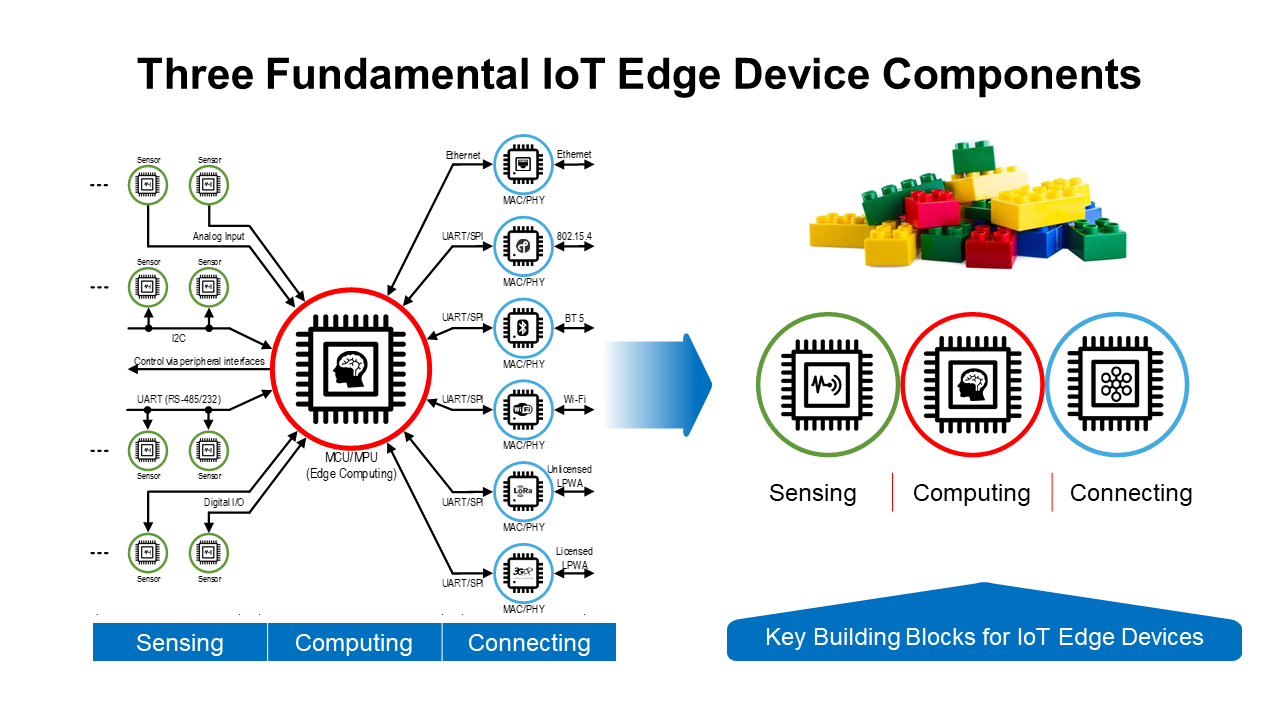
By defining these three fundamental blocks—Sensor, Compute, and Connectivity—we systematized our modular concept.
Depending on the product requirements, we can define different tailored hardware solutions using combinations of these blocks, much like different Lego pieces. With these customized hardware modules, we can build various IoT edge devices.
For example, a single LoRa/LoRaWAN connectivity module like the LoRa Stamp Module is called WisDuo, such as the STM32WLE5 Module for LoRaWAN RAK3172. A combination of computing, sensor, and cellular connectivity modules is called WisTrio, such as the NB-IoT Tracker Pro Quectel BG95-M3 RAK5010. A combination of computing, LoRa/LoRaWAN connectivity, sensors and interfaces like RS485 and 4-20mA is called WisBlock.
This naming convention reflects the modular vision behind our products, streamlining the process of building IoT solutions by defining specific combinations of core blocks that can be easily adapted for various applications.
Sensor, Compute and Connectivity IoT LEGO
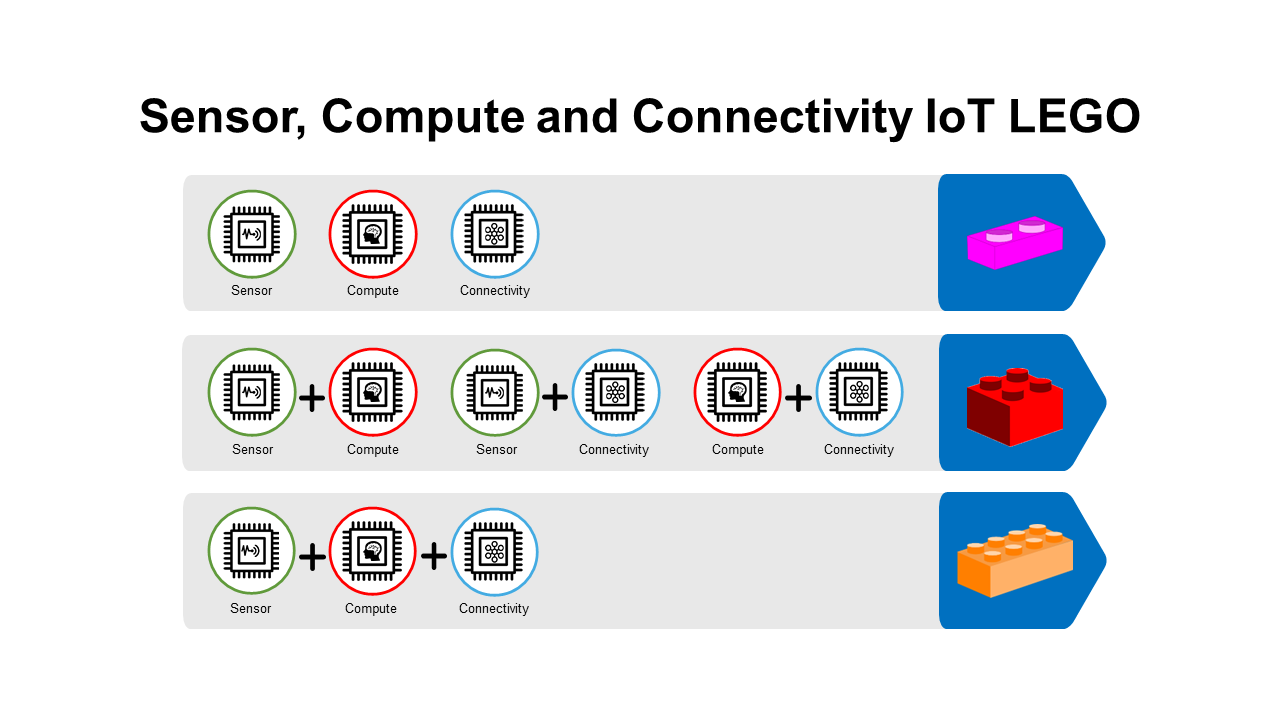
However, our goal extends beyond development. We aim to facilitate the commercial use of applications. We not only create a modular system like Lego for IoT, but we also strive to make it commercially viable, similar to IKEA in the furniture industry.
Proven Commercial Model
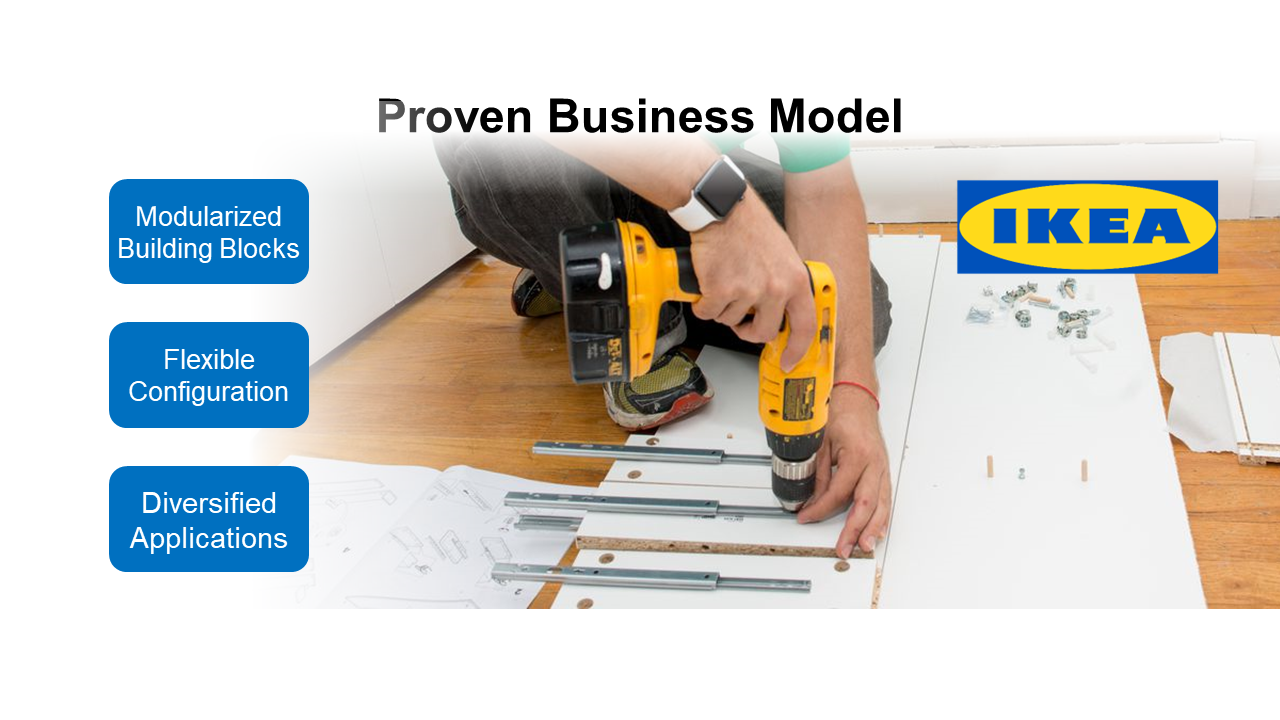
To address additional challenges and enhance commercial usability, we considered several factors:
- How to avoid disconnections during transportation?
- How to make a compact design?
- How to resolve the issue of heat affecting sensor values?
- How to avoid RF interference?
- How to support both battery and solar power?
Thus, we developed WisBlock, a versatile modular IoT system designed to simplify hardware integration and overcome common IoT obstacles. Its compatibility with multiple interfaces ensures reliable connectivity while its modular structure supports compact and efficient designs.
WisBlock modules are engineered to manage heat effectively, reduce RF interference, and allow for versatile power solutions, including both battery and solar options.
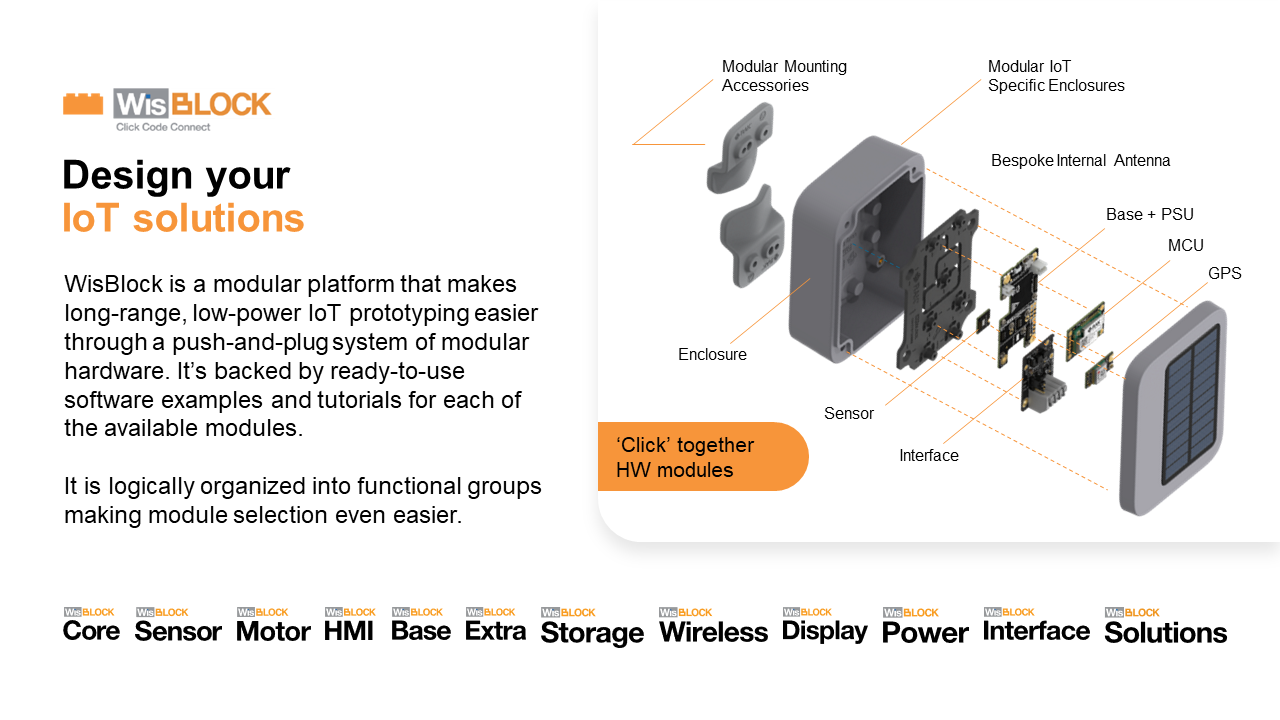
Conclusion
Our journey into modular IoT exemplifies innovation by bridging software accessibility with diverse hardware needs. This approach not only simplifies complex IoT systems but also opens commercial pathways akin to revolutionizing an industry.
To explore how our modular solutions can transform your IoT projects, visit our website and learn more about our modular IoT system.




